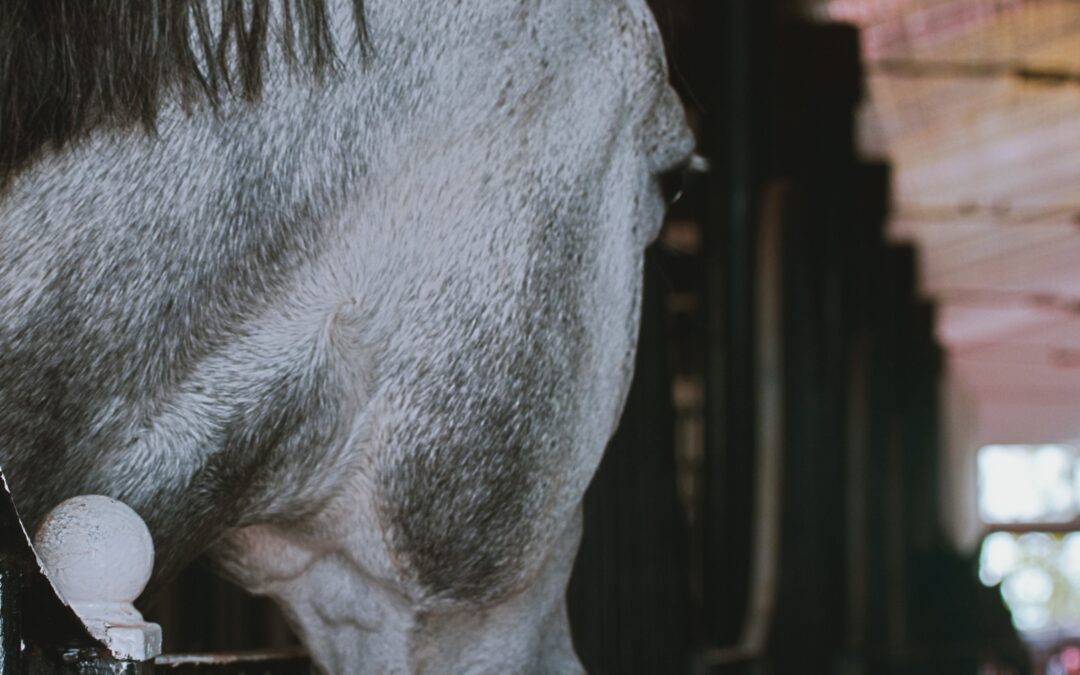We can all agree that the health of our horses is of the utmost importance to us. They are vulnerable to a number of transmissible diseases that can spread easily between horses. These diseases can cause a variety of symptoms, including respiratory signs, diarrhea, or neurologic signs. Biosecurity practices aim to prevent the introduction of infectious disease, and to minimize the spread within a population of horses when disease does occur.
The risk of transmitting infectious disease increases greatly at boarding or show facilities with frequent movement of horses on and off of the property. It is important to understand basic biosecurity principles to minimize these risks, and to be best prepared if a disease outbreak were to occur. Each barn and each situation is unique, therefore it is vital to work with your veterinarian to come up with the best tailored biosecurity plan.
First, start with monitoring the health of the horses on the property and improving daily practices.
- All horses should be kept up to date on their vaccinations, both core and risk-based. See additional vaccine information on our website and through the AAEP to help understand which vaccines are indicated on your property.
- Horses on the property should be segregated by their job and risk level. For example, show horses who frequently travel should be housed separately from mares and foals that are far more vulnerable to disease.
- Horses should be monitored daily for early signs of infectious disease. Daily walk-throughs can identify signs such as coughing, nasal discharge, diarrhea, or changes in attitude. Any of these signs should prompt the horse’s temperature being taken, as a fever is often present in contagious infectious disease. Normal temperature should be between 99.0-101.0 F.
- If signs of potentially infectious disease are noted, these signs should be reported to the appropriate individual. This may be the owner of the horse, the owner of the property, or a barn manager. A call to the veterinarian is also warranted.
Second, any new horses entering the property pose a risk for introducing a new disease to the herd. There are number of ways that this risk can be reduced.
- All horses entering the property should be up to date on their vaccinations, and come with a negative Coggins test and a health certificate if indicated.
- No horse should be allowed to enter the property if it showing current signs of disease.
- Any new horse on the property should be quarantined for 3 weeks. During this time, it should be isolated and monitored closely for signs of disease including nasal discharge, coughing, or diarrhea. Temperature should be taken twice daily. Any supplies used for this horse should be kept separate from other horses on the farm until quarantine is complete.
You can also use biosecurity practices to keep your horse safe when you are traveling, minimizing the risk that they become sick or bring disease back home to the herd.
- Minimize contact with other horses while traveling. Nose-to-nose contact, or sharing water and feed sources are all potential ways to transmit disease. If a hose is shared among many different horses, do not submerge the nozzle in the bucket when filling.
- Check temperature daily while traveling.
- After traveling, all supplies should be sanitized before returning home. This includes buckets, hay nets, feed bins, stall cleaning supplies, etc.
Finally, biosecurity practices are of paramount importance in the face of an outbreak to minimize the spread through the herd.
- First, the appropriate people should be notified. This may include the horse’s owner, the barn owner, the barn manager, and the veterinarian.
- The affected horse should be immediately isolated. Anything that touches the horse (feed buckets, water buckets, stall waste, staff’s hands and clothing) can carry the disease to another horse. The horse should be physically away from other horses with no nose-to-nose contact with other horses. Appropriate signage can help enforce this isolation.
- A designated staff member should be assigned to work with affected horses. This individual should not interact with the healthy horses. If this is not possible, the healthy horses should be handled first, and the affected horses handled last. After handling affected horses, clothes and boots should be changed or cleaned and hands washed before returning to a healthy horse.
- Additional biosecurity measures including foot baths, sanitation protocols, disposable personal protective equipment, and clothing changes should be discussed with the veterinarian.
- Until the outbreak is controlled, no horses should leave or enter the property.
- All horses on the property, including healthy horses, should be monitored closely. Temperatures should be taken daily to detect and isolate potential new cases early.
- Detailed logs should be kept recording the clinical signs, horses affected, control measures taken, test results received, and treatments performed.
When disinfecting with chemical cleaners, there are numerous considerations to take into account. In the link below, there is greater detail and access to additional resources on appropriate choice and use of disinfectants. These recommendations are adapted from the American Association of Equine Practitioners general biosecurity guidelines. They can be accessed “here”.

